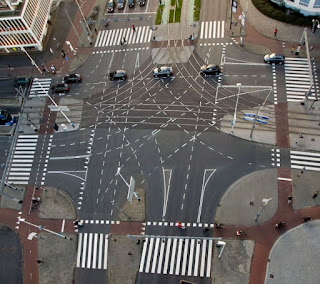Traffic engineering is a science focused on the design and implementation of safe, efficient, and cost-effective ways to get people and goods from place to place.
Traffic engineers study traffic flow, devise ways to improve access and egress at intersections, determine the best layout for parking lots or garages, plan road construction projects so as not to disrupt traffic flow unnecessarily—the list goes on! But what really makes traffic engineering Sydney necessary?
It's easy to forget that traffic engineering isn't just about roads and streets.
It's easy to forget that traffic engineering isn't just about roads and streets. Traffic engineers are concerned with safety, mobility, access, capacity and throughput. Traffic engineering deals with people—people who want to get from one place to another safely and in good time.
And this is what makes traffic engineers so different from other types of engineers: they're interested in how people behave on the road; how we interact with each other as drivers; how we use our senses while driving; how we use technology while driving (or not using it).
How we share the road with others; what kinds of things can distract us while driving (like eating or drinking); what kinds of vehicles are on the road at any given time; whether there are enough parking spots near where you live or work so that you'll feel comfortable walking there instead of driving yourself.
Traffic engineering isn't just about things either, it also involves people.
Traffic engineers need to understand the psychology of drivers, pedestrians and cyclists. They also need to understand how people will react when faced with a new traffic system.
For example, when a new signalised pedestrian crossing is introduced it could change where pedestrians wait for their signal to change. It could also cause confusion about whether or not vehicles must give way at this crossing. This confusion may lead to an increase in accidents if people start misinterpreting what's happening on the road and behaving inappropriately.
On top of this there's also likely to be general anxiety associated with interacting with traffic signals for the first time (after all they are well known hazards).
If we look at another example: suppose an intersection has been upgraded so that right turns on red lights are no longer allowed but instead motorists must wait at least five seconds before proceeding into the next lane?
When implemented correctly this can improve safety by reducing rear end collisions but it might take some time before drivers get used to this new rule and adjust their behaviour accordingly
Traffic engineering is about safety, not just about congestion.
Traffic engineering is about safety, not just about congestion. The first point to make is that traffic engineering Sydney is not just about the roads and how they are used—it also includes people in cars and trucks as well as pedestrians and bicyclists who use our roadways.
Traffic engineers try to keep everyone safe by designing and building roads that are up to code with proper signage, lighting, crosswalks, etc., all of which help us navigate life on the road safely.
For example: If you're driving down a street at night without any streetlights or stop signs posted along it then there's more likelihood that an accident will occur because visibility isn't optimal!
If there aren't any sidewalks in certain areas around town then pedestrians may have trouble crossing busy streets safely without getting hit by cars or trucks on their way home from work or school.
Conclusion
Traffic engineering is a complex field that requires a lot of know-how and experience. That’s why it’s important to understand its role in ensuring safe and efficient movement of vehicles, pedestrians and cyclists on our roads.
Traffic engineering is not just about things or people; it also involves society as a whole, by providing solutions that are fair and equitable for everyone who uses public roads.



Comments
Post a Comment